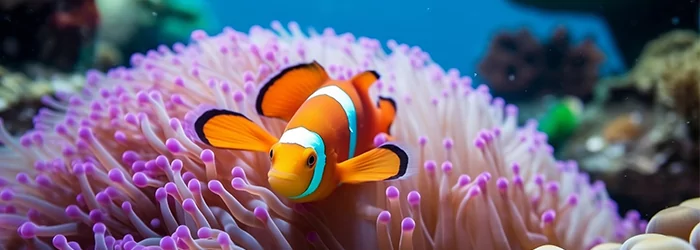The (Symbiotic) Relationship Between Employer and Employee
How do the basic bonds within a company mimic relationships found in nature? A company’s strength is to a large degree derived from the quality of the bond between employer and employee. If the employee, whether a physician, dog walker or factory worker, feels that his or her interests are respected and his work is fairly compensated, that individual will feel heard and rewarded, resulting in higher levels of performance and productivity. An employer obviously profits from happy, hard-working professionals and works to maintain an environment that will result in productive employees. The needs of both parties are uncomplicated and clear; an analogy with (another) animal kingdom begs to be made!
In the Workplace as in Nature
Consider the mutually symbiotic relationships that have evolved between organisms: small fish, such as Labroides, eating parasites off larger fish such as puffers; egrets and oxpeckers serving a similar purpose on the backs of cattle, zebras and other large mammals; plovers picking the meaty scraps off the teeth of crocodiles. If the southern rufous woodpecker lays its eggs on top of a black tree ant nest, the ants won’t attack the eggs and the woodpecker will return the favor by fighting off predators. Both benefit from a relationship biologists have characterized as a mutualistic symbiotic relationship. The minute gobie skims ectoparasites off groupers as the grouper provides the platform for a first-rate meal. Maybe it’s a bit of a stretch, but the comparison is basically sound. A functional, working relationship between an employer and employee is, at its core, not unlike a mutually beneficial arrangement between two symbiotic species, even if one of the organisms involved is a one-celled animal. Human beings have evolved, developed complex societies and civilizations, but the basic, pre-historic relationships and instincts are still there.
A Drain on Resources
And then, of course, we need to point out what happens when the relationship is one-sided. A parasitic relationship is one where one organism derives a benefit while the other is harmed or, at best, placed at a disadvantage. Consider a tapeworm that deprives the host organism of beneficial nutrients. This relationship, too, can develop between employer and employee, in which case it seems best to let the employee who is draining your company resources go as quickly as possible. More on that below.
More than an Employer
I try, though I know I don’t always succeed, in creating these mutually advantageous relationships at CivilGEO. As an employer and as someone who has struggled to observe a healthy balance between work and everything else, I may even be accused of going beyond the norm. The company is a kind of family to me and to the extent I can, I will do what is necessary to keep the operation going and the community that is CivilGEO robust.
Strengthening the Association
My framework for creating an optimal environment for employees is simple. Here is how I try to keep the symbiotic associations strong:
- Communicate fairly and clearly, listen to concerns and offer an open door. Remember your favorite old college professor that never tossed you out of his office, but responded to every one of your requests for help with patience and a smile? This professor encouraged questions and comments from students and held more than enough review sessions before exams. This is what I aim to be to my employees. I don’t always succeed, but I try.
- Encourage employees to be their best and support them in every way. This means sending hard-working employees to get additional training or education and recognizing skill and solid ability. Praise strong efforts by staff members and reward tenacity and demonstrations of grit.
- Set high expectations and share them with staff. I have high expectations and I make sure to explain what they are, many times if necessary. If a certain employee needs the message delivered in a particular way, I will do that as well. I will support staff that are making an effort (see above), but I have little patience for those who refuse to try to work with me. Set high expectations and support employees, but if someone is draining resources, cut your ties. I had an employee once that persisted in creating difficulties for myself and my staff. I often felt like his puppet, forced to clean up costly mistakes or keep promises he had made to clients without clearing it with programming staff or myself first. Needless to say, this was an employee that needed to go; recurring, destructive patterns drained company resources. The association smacked of parasitism.
Relationships between employers and employees are complicated and in our modern, complex societies, a lot goes into making a work environment that is fulfilling for all. But, in other respects it amounts to a simple formula: Are both parties benefitting from the relationship in the most fundamental and basic way? We can take our cues from associations found in nature and move ahead.
Also Read: The Team that Could





















